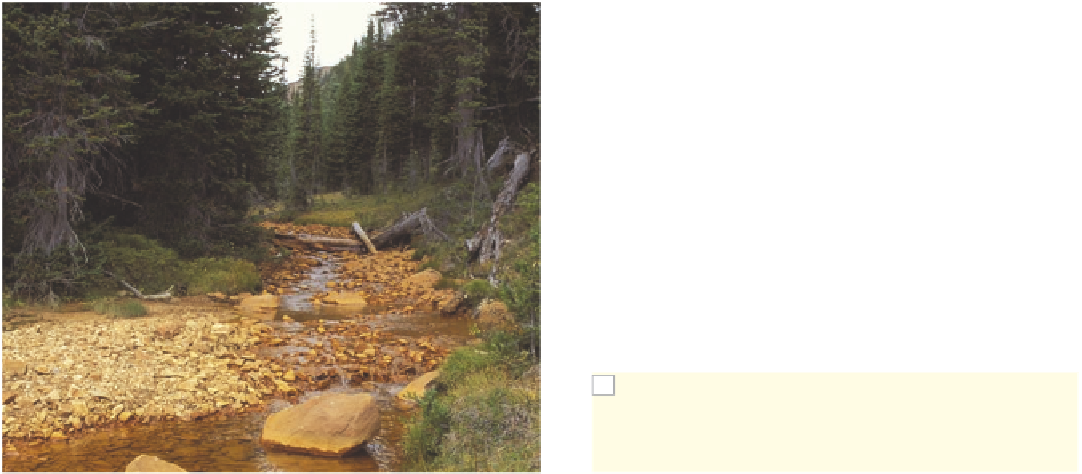Environmental Engineering Reference
In-Depth Information
12
Renewable
Minerals
Geology and
Nonrenewable Minerals
Land
Nutrient
Recycling
CASE STUDY
The General Mining Law
of 1872
sell it. People have constructed golf courses, hunting
lodges, hotels, and housing subdivisions on public
land that they bought from taxpayers at 1872 prices.
So far, public lands containing an estimated
$240-385 billion (adjusted for inflation) of publicly
owned mineral resources have been transferred to pri-
vate interests at 1872 prices. Hardrock mining compa-
nies pay no royalties to taxpayers on the minerals they
extract from such public lands and fight hard to keep
this law on the topics.
In 1992, the 1872 law was modified to require
mining companies to post bonds to cover 100% of the
estimated cleanup costs in case they go bankrupt—a
requirement that mining companies are lobbying
Congress to overturn or greatly weaken. In the past
such bonds were not required. As a result, if we de-
cide to clean up land and streams (Figure 12-1) dam-
aged by more than 550,000 abandoned hardrock
mines (mostly in the West), the bill for U.S. taxpayers
will be $33-72 billion!
Mining companies point out that they must in-
vest large sums (often $100 million or more) to locate
and develop an ore site before they make any profits
from mining hardrock minerals. In addition, their
mining operations provide high-paying jobs to min-
ers, supply vital resources for industry, stimulate the
national and local economies, reduce trade deficits,
and save U.S. consumers money on products pro-
duced from minerals.
Environmentalists and some economists call
for banning such sales of public lands but allowing
20-year leases of designated public land for hardrock
mining. They would also require mining companies to
pay a
gross
royalty of 8-12% on the wholesale value of
all minerals removed from public land—similar to the
rates that oil, natural gas, and coal companies pay.
Environmentalists also want much stricter re-
quirements for cleanup of any environmental damage
caused by mining companies. Canada, Australia,
South Africa, and several other countries have laws
that require royalty payments and make mining com-
panies take full responsibility for the environmental
damage they cause.
Some people have gotten rich by using the little-known
U.S. General Mining Law of 1872. It was designed to
encourage mineral exploration and the mining of
hardrock minerals
(such as gold, silver, copper, zinc,
nickel, and uranium) on U.S. public lands and to help
develop the then sparsely populated West.
Under this law, a person or corporation can file a
mining claim or assume legal ownership of parcels of
land on essentially all U.S. public land except parks
and wilderness. To file a claim, you say you believe
the land contains valuable hardrock minerals and
promise to spend $500 to improve it for mineral de-
velopment. You must then pay $100 per year for each
8 hectares (20 acres) of land to maintain the claim,
whether or not a mine is in operation. You can also
pay the federal government $6-12 per hectare
($2.50-5.00 an acre) to buy the land. Then you can use
it for essentially any purpose, lease it, build on it, or
Figure 12-1
Natural capital degradation:
this polluted creek in
Montana illustrates how gold mining can contaminate water when
highly toxic cyanide or mercury is used to extract gold from its ore.
In addition, air and water convert the sulfur in gold ore to sulfuric acid,
which releases toxic metals such as cadmium and copper into streams
and groundwater.
x
H
OW
W
OULD
Y
OU
V
OTE
?
Should hardrock mining com-
panies have to pay an 8-12% royalty on the value of minerals
they remove from public lands in the United States and take
full responsibility for any environmental damage caused
by their activities? Cast your vote online at http://biology





